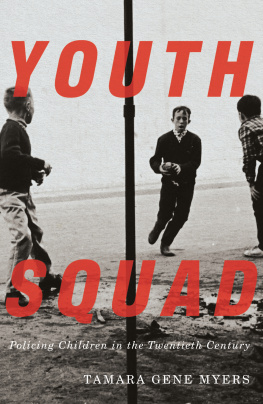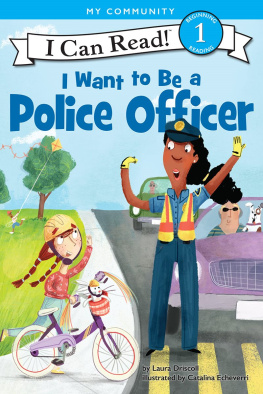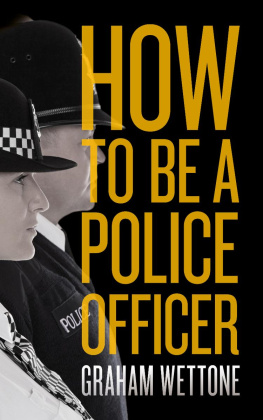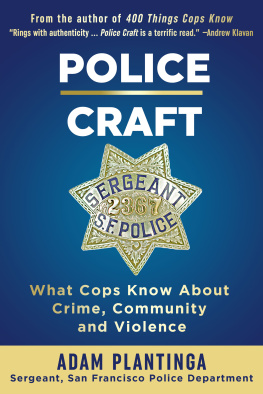
YOUTH SQUAD
YOUTH SQUAD
Policing Children in the Twentieth Century
TAMARA GENE MYERS
McGill-Queens University Press
Montreal & Kingston London Chicago
McGill-Queens University Press 2019
ISBN 978-0-7735-5892-2 (cloth)
ISBN 978-0-7735-5893-9 (paper)
ISBN 978-0-2280-0031-0 (ePDF)
ISBN 978-0-2280-0032-7 (ePUB)
Legal deposit third quarter 2019
Bibliothque nationale du Qubec
Printed in Canada on acid-free paper that is 100% ancient forest free (100% post-consumer recycled), processed chlorine free
This book has been published with the help of a grant from the Canadian Federation for the Humanities and Social Sciences, through the Awards to Scholarly Publications Program, using funds provided by the Social Sciences and Humanities Research Council of Canada.
We acknowledge the support of the Canada Council for the Arts.
Nous remercions le Conseil des arts du Canada de son soutien.
Library and Archives Canada Cataloguing in Publication
Title: Youth squad : policing children in the twentieth century / Tamara Gene Myers.
Names: Myers, Tamara, 1964- author.
Description: Includes bibliographical references and index.
Identifiers: Canadiana (print) 20190131136 | Canadiana (ebook) 20190131187 | ISBN 9780773558922 (hardcover) | ISBN 9780773558939 (softcover) | ISBN 9780228000310 (PDF) | ISBN 9780228000327 (EPUB)
Subjects: LCSH: Police services for juvenilesHistory20th century. | LCSH: Police-community relationsHistory20th century.
Classification: LCC HV8079.25 .M94 2019 | DDC 363.20830904dc23
This book was designed and typeset by Peggy & Co. Design Inc. in 10.5/14 Sabon.
For John
Contents
Figures and Table
Figures
Table
Acknowledgments
The making of this book was facilitated by many institutions, colleagues, and friends. I received crucial financial support from the Social Sciences and Humanities Research Council of Canada, the University of British Columbia, and Lehigh University. Most importantly, these funds ensured that I could travel to archives, hire a series of brilliant research assistants, and present findings to multiple audiences. The people I have met in preparing this book have deeply influenced its final form and it has been a privilege to have their company on this intellectual journey.
Helping to make this a rich and pleasurable research program long before I started to assemble chapters were archivists and librarians. I want to especially thank the staff at the municipal archives of Montreal, Calgary, Toronto, and Vancouver, the Muse de la Police de Montral, Centre de Documentation/Service de Police de la Ville de Montral, Harvard University Law Library, New York Public Library, the McGill University Archives, Universit de Montral library, Library and Archives Canada, Archives Nationales du Qubec Qubec, and the Bibliothque et Archives Nationales du Qubec Montral. Without the dedication of so many archivists and librarians, books would not get made, including this one.
I had the great fortune to have a wonderful group of research assistants. I thank Meghan Longstaffe, Geoffrey Korfman, Sarah Thornton, Simon Vickers, Ben Stevenson, Claire Chevreau, Mab Coates-Davies, and Sarah Gibson. The indefatigable Hubert Villeneuve did exceptional work for me in Montreal; his enthusiasm and professionalism profoundly shaped the making of this book. Katie Hurlock and Kristin Tremper helped out in the late stages of manuscript preparation.
Colleagues near and far contributed generously of their time and expertise. The members of the Montreal History Group, especially Mary Anne Poutanen, Andre Lvesque, and Magda Fahrni, provided insights into archival sources and materials for which I am deeply appreciative. In Vancouver, Michel Ducharme, Laura Ishiguro, Paige Raibmon, Tina Loo, Brad Miller, and the late Danny Vickers read grant applications and drafts of papers, and most importantly, listened to the project as it came into being. I am grateful for the time, friendship, and the extraordinary example set by my sometime collaborator, Mona Gleason. Mona, Megan Davies, Colin Coates, Mary Anne Poutanen, Andre Lvesque, Bettina Bradbury, and Kristine Alexander offered their insights on my work and provided superb company. These are the very best colleagues and friends one could ask for.
My second academic home in Bethlehem, PA, has been an ongoing source of sustenance. For welcoming me into their wickedly smart and supportive circle of women in the academy, I thank Stephanie Watts, Vera Fennell, Julia Maserjian, Kristin Handler, and Holona Ochs. Seth Moglen and Kristin Handler have been a constant presence in my American life, lovingly helping to translate and advise. Kathy Hutnik, John Savage, Marisa Cerveris, Amy Munson, Ziad Munson, Sandy Clancy, Monica Najar, and Jen Kalembar provided outstanding companionship. My book club Amy Munson, Claire Kowalchik, Julie Kibelbek, Karen Gennaro, and Jenny Landis reminded me that reading and writing books are some of lifes greatest pleasures. John Pettegrew introduced me to Sheyda Jahabani and Jonathan Hagel, and Im grateful for their generosity and for what we shared a deep appreciation of food, adventure, meaningful work, a rich sense of humour, and love. Thanks to all.
At McGill-Queens University Press, Jacqueline Mason demonstrated an early interest in the project and remained dedicated to it over many years. Her enthusiastic reception to my ideas kept me going in dark moments.
The making of this book overlapped with the best and worst that life can offer. John Pettegrew and I worked out a bi-coastal loving relationship that distracted us from, and enriched, our scholarship. Over the years, ritually meeting over martinis and sumptuous food in Vancouver, Vermont, Bethlehem, New York, Whistler we discussed the details of research delights and difficulties. As I finished this book I became his colleague at Lehigh. He prioritized my finishing of it, reading and critiquing chapters, despite battling a terminal illness. He took great pleasure from my pressing send. He died two months later. I have yet to find the words to express my profound sense of loss but know that he is on every page of this book.
And finally, I thank my family. Johns children, Nick Pettegrew and Helen Keetley, are a constant source of love and amazement. In Johns absence, their mother, Dawn Keetley, has been a great support and friend. My sister Friday Myers and her daughter Coco, my dad Peter Myers, and his partner, Fiona Lucas, reassure me daily about life, love, and loss.
An earlier version of appeared as Didactic Sudden Death: Children, Police, and Teaching Citizenship in the Age of Automobility, Journal of the History of Children and Youth 8, no. 3 (Fall 2015): 45175. I thank the editor and Johns Hopkins University Press for allowing me to reproduce it here.
YOUTH SQUAD
Introduction
In a place not far from where I live in Pennsylvania, teenage transgressions recently prompted extraordinary action from the local government and police force. Frustrated in the face of teen congeries that riddled the streets at night, the police chief complained bitterly about his inability to distinguish the vandals among them. Adolescents who linger and loiter by night have long provoked adults because in their teetering between childhood innocence and adult maturity they represent an incipient threat to the community, if not themselves. In this instance, the borough council of Coplay took the opportunity to criminalize all teens: the new youth curfew prohibits anyone under eighteen from being out in public from midnight to 5 a.m. on weekdays and 1 a.m. to 5 a.m. on weekends. Police Chief Vincent Genovese endorsed the curfew because, as a status offence, it allowed him to clear the streets of the teens without having to prove any crime had been committed. Like the age-old crime of vagrancy, curfew vastly expanded police discretion and reinforced hierarchy and social order. the particularism of regulation: the gendered, racial, and class identities of kids whose bodies and behaviours are spatially outlawed by curfew enforcement. This local story of troubled policeyouth relations and the curfew solution is part of a long history of police implementing age-conscious mechanisms of social control.
Next page










